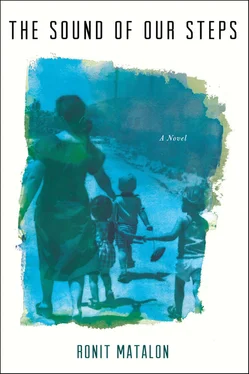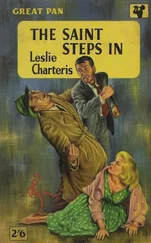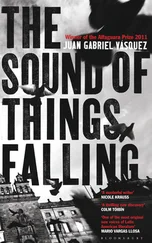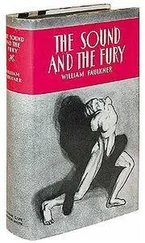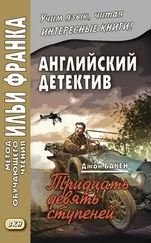When she crouched at the foot of the bed to lace my shoes, the square of the window was revealed to me again, but different: the dense darkness had given way to grays growing fainter, diluted by the pale light. We took the first bus to Petach Tikva, to what she referred to in her laconic way as “Something I’ve got today”: preparing five hundred sandwiches for summer day camps in the Petach Tikva area, an extra job in addition to her usual summer work.
We ran down a moldy staircase at the side of the municipality building into a big basement or shelter, skipping over cardboard boxes, piles of papers, office waste, clumsy garbage cans. The darkness down there was absolute; when she found the switch and turned on the light, it seemed as if the space were illuminated for the first time in its history, itself astonished by its new face. She threw her bag onto one of the dusty, broken chairs piled up at the side, suddenly lifting me with her hands and sitting me down on one of the long worktables. “Sit,” she commanded, one of the only words she spoke during the two and a half hours we were there. The others were “We’ll be done, insh’allah , by eight thirty.”
There we were, the two of us, the long worktables, one facing the other, probably thrown out of some youth center; all around us concrete walls that had warts, strange, murky lumps; a wall clock that someone had seen fit to hang there; three huge plastic bags crammed with five hundred bread rolls, plastic containers with egg salad and pickled cucumbers, and four jars of chocolate spread. There was a single light. It dangled from a thin electric cord fixed in the ceiling, an opaque yellow globe, swollen, as if it were about to explode. The globe moved above her head all the time as she worked, above the worktable, swaying gently, left and right, as if a wind were blowing through the windowless concrete box. There was utter silence, full of suspense, movements, only movements, yellow shadows cast by the light swaying indifferently over her feverish head. I didn’t dare bite into the roll she thrust into my hand, riveted as I was to the assembly line series of operations taking place before my eyes. There was no break, not a pause, in the trance that took hold of her, only that stirring of the air as testimony to the great movement rushing through it: she split the five hundred rolls with a knife, spread with egg salad, added two slices of pickled cucumber, wrapped, spread with chocolate spread, wrapped, again and again.
The hands of the clock on the wall behind her echoed the rhythms of anxiety welling up inside me, growing from moment to moment; the yellow globe swung over her head, keeping time to her hectic, desperate haste. “Will she make it? Will she make it?” I pleaded in my heart, feeling the tension stiffening my limbs and a sudden budding of hard tenderness, and with it a new sense of partnership: “Will we make it?”
THE EVENING BEFORE the morning she died, in the hospital, her hand resting on the fold in the sheet. She fondled the hem of the sheet between her finger and her thumb. The bluish veins branched in the darkness of her hand and lay on her face like a network of pipes on the surface of the ground, a vein pierced by the needle of the infusion. Fondling and fondling in a dreamy distraction. Fondling was never her thing, never. It was Nona’s.
IT ISN’T TRUE, what Nona said, that she didn’t take care of her hands on purpose, out of obscure vindictiveness toward the Nona, out of a kind of display of self-harm (not Nona’s words). It isn’t true: she actually “had her hands done.”
From time to time, once every few months or in honor of a special occasion (a wedding, a holiday), she would go to Miriam, the manicurist, to have her hands done. “I’m going to do my hands,” she would announce with a kind of suppressed pride, with the self-importance of someone trying to keep a secret but also eager for its discovery without her knowledge.
The time spent at Miriam’s, in her apartment block in the neighborhood, was when she charged her batteries, while Miriam, as well as soaking her hands in a basin of warm water, slowly massaged the joints of her fingers. Miriam, and the time, and the basin, and “doing her hands” were the pauses she agreed to take from her life from time to time, to make room for “normal things” that she generally feared and held in contempt. Miriam had a way of drawing out her words in a kind of blandness that did not grant any moment any particular significance or seriousness, and this had an effect on her, blunting her usual proclivity for sharp cuts and sudden turns that could take your breath away. Hers, too.
“Dear oh dear, what’s this I see here, Mrs. Levana?” Miriam investigated her hands with near-scientific curiosity, some new scratch or burn. Or: “So what do you say, Mrs. Levana? What do you say to these hands of yours? Are they a sight for sore eyes or what?” Slowly she would put on the spectacles hanging from her neck on a gilt chain, sending the mother a sidelong look full of irony and affection. Somehow she found herself revealing to Miriam, only to Miriam, the injuries sustained in her work accidents, like a little girl allowing her big sister to count and classify her wounds without judging them: the tragic halo and meaning of her wounds would dissolve under Miriam’s eyes, turning them into a kind of game. If femininity were a kind of game, a forgiving, noncommittal wink — she could live with that.
When she came back from Miriam, she would hold her hands a little stiffly and self-consciously for a while, as if they were covered with wax, examining them from time to time. It was heartrending: from the back of her hand, ravaged by scratches, scars, burn marks, and swollen veins, emerged nails cut short as a boy’s and painted a pinkish-orange; they did not belong, seemed quite perplexed.
There was a ring, too, which she transferred from her ring to her middle finger and back. Five interwoven coils of yellow and white gold without a stone, like a wedding or an engagement ring. Like.
We went to buy it together, she and I, from the goldsmith in Petach Tikva. No, we didn’t go together, I trailed behind her while she did her chores, and suddenly, on an impulse, she went into the goldsmith’s, next to the alley beside the big synagogue, and bought it, just like that, without thinking. Years and years after Maurice had evaporated from her life, at least in a day-to-day way, she bought herself a wedding ring, or something like a wedding ring. She never mentioned it, she wore it indifferently, lost it a few times and found it again in improbable places — hidden in the gravel of the path leading to the house, hanging by a thread from the bath drain, buried among shards of glass and sand in the dustpan — muttering to herself, “Look at that, just look, from God.”
Miriam said, “Now, Mrs. Levana, while I do your hands, we’ll put your beautiful ring away so it doesn’t get spoiled.”
She gave an embarrassed smile, a shy smile not from here and now, from a different place, a different heart (the photograph from Piazza San Marco with the pigeons), peeking in wonder at her hands, at the painted nails on which Miriam blew to dry them faster. For a few hours, after she had her hands done, they were not as rough — they lost the roughness, prickliness, that we felt when she touched us, if she touched us, a thin, invisible, almost prickly layer, like a patch of prickly pears to the north of the shack, on the way to the reservoir.
PIAZZA SAN MARCO: FIRST VISIT
THERE WERE THREE of us in the photograph: him, the mother, and me at the age of a year and ten months. (For years she said “two,” later she corrected herself: “Never two. Maybe a year and ten months.”) He was in Italy. He sent for her to come with the child, so he would see the child at last. They are kneeling before the pigeons, among the pigeons, the child between them, standing like a doll propped on her feet for a minute, supported from behind (the mother) so she wouldn’t lose her balance and fall forward onto the paving stones, onto the pigeons. The tenuous, improbable balance is presumably connected to the odd gap between the child’s upper body, swollen in the yellow coat — which looks as if it has been stuffed full of rags and cotton — and the skinny legs holding it up. The photograph is tinted in a pale green tending to yellow. Everything is bathed in the color: the square, the pigeons, the figures, the facades of the buildings behind them; the pigeons are blurred in the yellowish light, fading in a cloud of dust or plaster. He has one hand in his jacket pocket, the other held out to the pigeons, he looks at the photographer, smiles (what kind of a smile?). The mother doesn’t smile. She is busy arranging the child in front of the camera, one hand supporting her from behind, the other, visible to us, holding the child’s hand, with a solicitous expression regarding the child, as if to say, Look, look.
Читать дальше
